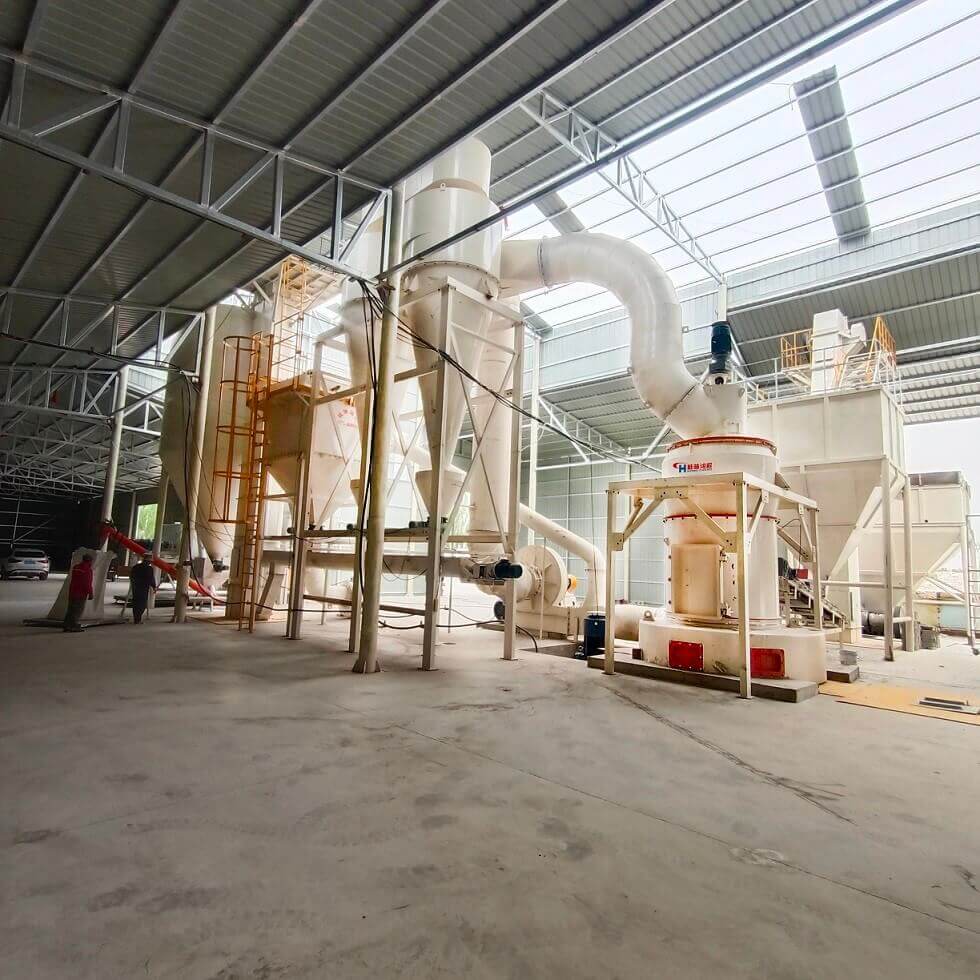The limestone Raymond machine grinding process mainly includes two types: 1. Open-circuit process: after the material passes through the mill once, it is used as a finished product for the next step of operation; 2. Closed-circuit process: after the material is ground, it passes through one or more stages. The fine particles are separated into finished products and the coarse particles are returned to the limestone Raymond roller mill for re-grinding.
The circuit opening process is relatively simple, with the advantages of less equipment, low investment, and easy operation. However, because the materials need to meet the fineness requirements before they can be ground, over-grinding is easy to occur, and the finely ground materials easily form a cushion layer, which hinders the further grinding of coarse materials, greatly reduces the grinding efficiency, and increases power consumption. Therefore, most limestone powder manufacturers currently choose a closed-circuit process, which can reduce over-grinding, improve mill efficiency, and reduce energy consumption. In addition, the limestone powder produced using a closed-circuit process has a uniform particle size and is easy to adjust to meet different fineness requirements. To produce limestone powder in a closed-circuit process, a limestone Raymond machine is usually selected as the main grinding equipment.

Limestone Raymond Machine, welcome to leave a message or consult [email protected]
The limestone falls to the belt conveyor through the hopper at the bottom of the silo, and then is sent to the mill for grinding. Since the grinding roller rolls tightly on the grinding ring under the action of centrifugal force, the material is scooped up by the shovel and sent to the middle of the grinding roller and the grinding ring. The material is broken into powder under the action of the rolling force. Under the action of the fan, the powdered material is blown out and classified by the classifier above the mill. The classifier is composed of a radial blade wheel and a transmission device. The blade wheel is driven by the transmission device to rotate at a certain speed, blocking the coarse particles in the air flow and returning them for grinding. The fine powder passes through the air screen with the air flow and is sent to the classifier. Cyclone separator and hence classifier plays a screening role. By adjusting the amount of air or changing the speed of the impeller, the particle size of the powder can be freely adjusted. The cyclone separator separates the qualified products from the air. The finished products are transported to the finished product warehouse by pipelines via bucket elevators. The air flow is returned to the blower through the return duct for recycling. The material contains a certain amount of moisture, and a certain amount of water vapor will be generated during grinding. As the sealing of the entire pipeline is not absolutely tight, a certain amount of outside air will be sucked in, which will increase the circulating air volume of the system. To ensure that the mill works under negative pressure, excess air volume It enters the bag dust collector and is discharged into the atmosphere after purification.
The above is the limestone Raymond machine grinding process, which is also the grinding process widely used by limestone powder manufacturers. If you have limestone Raymond machine purchasing needs, please leave us a message to learn about the limestone Raymond machine grinding process.